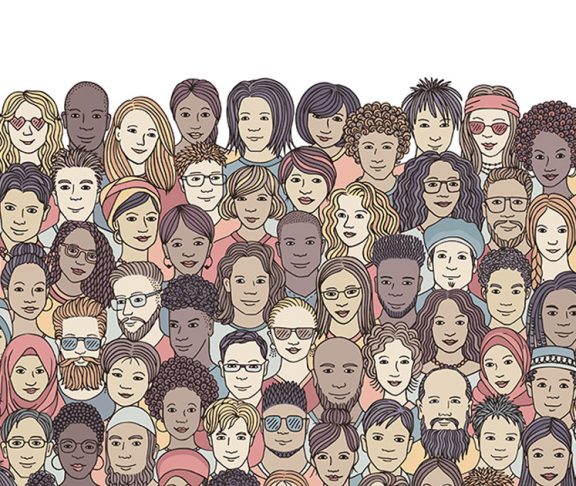
Geraldine Richmond
President, Sigma Xi; Presidential Chair of Science, Professor of Chemistry, University of Oregon
Not that long ago, the idea of workplace diversity was considered revolutionary, if not radical. Thankfully, years of progress have brought the concept into the mainstream. Yet old habits die hard. It’s still far too easy to stave off diversity with the time-tested refrain, “But that’s the way we’ve always done it.”
This tired mindset is especially perilous in the exacting realms of science, technology, engineering, and math. By definition, these fields are tasked with discovery and exploration. What better way to think outside the box than to involve the people who’ve been left out? Of course it can invite discomfort, but stress is often a catalyst for creativity in problem-solving and decision-making.
Lessons learned
Our ultimate goal must be “cognitive diversity,” the grand assembly of different perspectives and skills. We can only reach this through a diversity of race, gender, sexual orientation, age, experience, and geography. Examples abound show how a diverse team can identify and address issues that a look-alike, think-alike team might miss.
For instance, countless lives of women and children have been saved after airbag engineers realized the mistake of basing the force of deployment on the size of the average adult male. Lives are also being improved and saved as medical and pharmaceutical researchers take into full account the differences in racial, gender, and ethnic physiology when designing clinical studies.
Creating an inclusive environment in laboratories and classrooms is essential to activating cognitive diversity. It isn’t enough to just allow new voices into the conversation. To realize their value, these voices also need to be heard. Listening isn’t simply waiting for the last person to finish talking.
The case for diversity
Substantial research shows the economic benefit of an inclusive environment. Companies with ethnic and culturally diverse executives, boards, and rank-and-file workers are 35 percent more likely to show profitability above their industry medians, according to a recent study. The data, compiled by the McKinsey Global Institute, was gathered from more than 350 companies across a range of industries in the United States, Canada, Latin America, and the United Kingdom.
A Credit Suisse study found that large businesses with women on the board outperformed those with men-only boards. Boards that included women had higher returns on net assets, lower debt-to-equity ratios, higher book value, and higher average net income growth.
The evidence is undeniable. Diversity works.
Generational differences
Studies also show the clock is ticking for those who resist diversity trends. There is now a large and expanding gap between how older generations and younger Millennials define diversity and inclusion.
Baby Boomers and Gen-Xers tend to consider workplace diversity in legal and moral terms, regardless of whether it benefits the bottom line. For them, it’s just a matter of fairness.
Millennials, however, take a much broader view, according to another recent study by Deloitte and the Billie Jean King Leadership Initiative. They consider diversity to be a necessary building block for innovation. To Millennials, an inclusive culture — built on teamwork — is essential to staying competitive and growing financially.
According to this study, the gap between the generations is already causing hardships as upper management resists attempts by Millennials to express themselves freely. What the old guard may interpret as rebellion may well be something else entirely: a younger generation striving to live out principles based on a new and valid understanding of the benefits of inclusion.
Surely the generations that follow will only amplify these views, and that means diversity is no longer simply an imperative for today. It is a requirement for the future. By their very nature, scientists and engineers should always be at the forefront of innovation. But now the writing is on the wall: If we are to retain that distinction, we also must fully embrace the growing understanding of the power of diversity.
Sigma Xi, The Scientific Research Honor Society, is proud to honor aquatic scientist Ashanti Johnson of Fort Valley State University with Sigma Xi’s 2019 award for service to society. Johnson is a leader in facilitating science-related professional development experiences for students representing diverse backgrounds. She will be a plenary speaker at the 2019 Sigma Xi Annual Meeting and Student Research Conference in Madison, Wisconsin, this November to share effective strategies, what she has learned, and the work still left to be done for advancing diversity and inclusion in STEM. www.sigmaxi.org
Geraldine Richmond, President, Sigma Xi; Presidential Chair of Science, Professor of Chemistry, University of Oregon, [email protected]

